Posted by
Darrell Mordecai
Backlinks.
One of the foundations of any SEO strategy.
However, just running out and trying to build links will leave you spinning your wheels and going nowhere, fast.
To see your site traffic growing month after month, you must be strategic about your link building. Your strategy must be built on sound research.
In this post, I’ll be showing you how to create a well-thought-through link-building strategy.
Also, I want to use this post to announce our new Link Explorer. Using the link explorer together with our link tracker will give you everything you need to run a successful link-building campaign.
Let’s get started…
Creating a Backlink Strategy
Before reaching out to blogs to beg for links, you must first create a strategy.
The reason is simple.
You won’t know how to get to your destination if you don’t know where you are going.
In other words, to be competitive in your niche as a whole, how many links do you actually need? From which sites?
To understand this, you must have a detailed understanding of your competitor’s link profiles.
Backlink Analysis – What Makes Your Competitors Successful?
To analyze the backlink profile of all your competitors, go to our backlink analysis tool and drop a competitor’s URL into the search bar. You can find it by going to Site Explorer > Backlink Explorer > Overview.

Look At the Strength of the Domain as a Whole
I’ve dropped a URL into the backlink checker. As you can see the tool shows you the site’s top-level metrics.
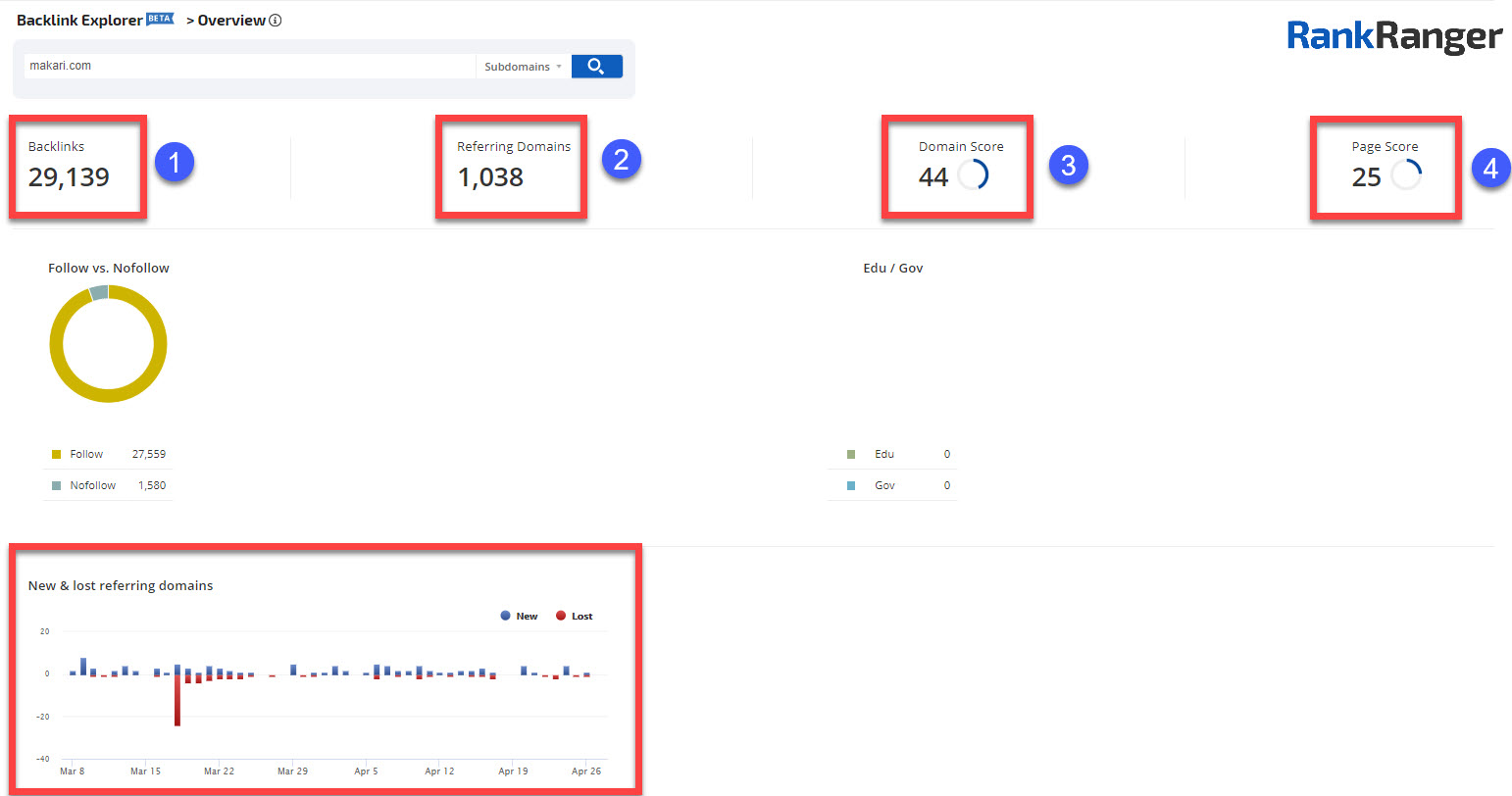
This means you’ll be able to see:
- Backlinks
- Referring Domains
- Domain Score
- Page Score
All these metrics will help you understand how competitive your site has to be to compete with this competitor.
The reason this is so important is…
Once a competitor dominates a niche, it’s likely to organically earn links even without outreach.
Think about it this way…
If you were a blogger looking to link out to a resource to prove a point in a blog post, wouldn’t you happily link out to the top site in the industry? In all likelihood, you’ll find the one that’s at the top of Google. Many links are earned this way.
This makes it hard to compete with the top dogs in any industry.
To see how competitive your general niche is, you’ll need to look at the Domain Score of the top competitors. Domain Score is a measure of how authoritative a domain is based on its backlink profile. It’s measured on a scale of 1 – 100.
Now, it’s important to note that Domain Score is an approximation of a domain’s authority. In other words, it’s not a Google metric. However, you can still use it to give you a general idea of how authoritative a site is.
So, for instance, if you started a blog in the general health niche, you might end up competing with a site like WebMD.

As you can see in the screenshot, WebMD has a Domain Score of 93.
Good luck competing with them.
The example above might be overkill, but my point is, don’t compete with big sites head-on.
Instead, niche down.
To do that, think about what aspect of the medical world you serve. Are you a chiropractor? If so, then write content only focused on your niche.
Here is the Domain Score of a local chiropractor.

As you can see, since the site is a local business, it’s ranking at the top of Google with very few links pointing to it. By gaining a few high-quality links you could easily compete with this site.
If on the other hand, you are not running a local business but provide information about chiropractic issues, you could write informational blog posts in that niche.
However, if you research queries of this nature and you find big sites like WebMD showing up, you might need to niche down further.
In other words, is there a sub-niche in the chiropractic world that you could speak to?
Once you own that sub-niche, you might then try to scale your market share by going for a slightly more competitive sub-niche. This way your site can increase its organic authority one sub-niche at a time.

The point is, don’t try to compete with the big fish.
You’ll get eaten.
Instead, play in a smaller pond.
Also, focus on Domain Score to see how your site stacks up against theirs.
You should do this with all of your competitors. This will give you a good idea of what your site’s backlink profile should include in order to capture market share.
Once you have your niche figured out, It’s time to see the actual links pointing to your competitor’s sites. This will help you to find qualified link opportunities.
Find Backlink Opportunities with the Backlinks Report
Now if the site you are analyzing has a huge number of links and referring domains, don’t be intimidated.
In general, the majority of those links are likely to be either low quality or no-follow.
The key here is to find the most important links that are driving the site’s success.
Think 80/20. In other words, 80% of a site’s success comes from 20% of its assets. Although these percentages are approximations, the point is clear.
Look for the highest quality links and don’t bother with the rest.
To do that, go to the backlinks report. At this point, you are looking for the sites that you want to link to your site.
To do this, focus on the sites with the highest Domain Score. You can easily do this by using a filter.
- Click the filter icon
- Under Domain Score, click the = sign and change it to >
- Choose 40 as a minimum Domain Score
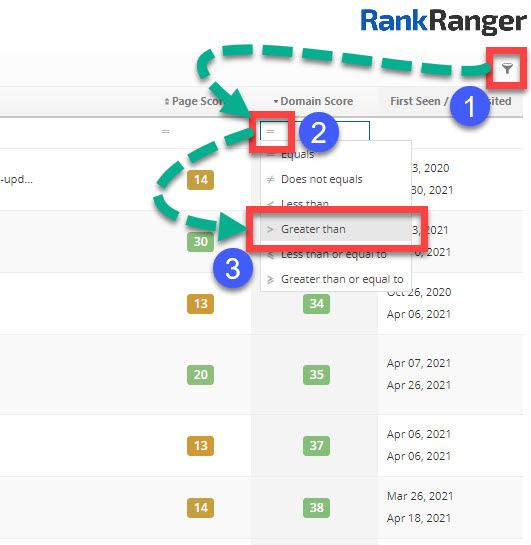
You can now see domains that are authoritative, all at a glance.
Create a list of sites that you want to reach out to in the future to ask for links. Create your list from here, but ignore the links marked as No Follow.
Once you have a list, compile separate lists for all of your competitors. Don’t skip this. It’s important for what comes next.
Serial Linkers – Find Sites That Are Looking for Content Like Yours
At this point, you should have more than one list of high-quality link opportunities.
You should now try to find sites that link out to numerous sites. Better yet, look for sites that link out regularly to numerous sites.
Think ‘Serial Linkers’.
You can easily find those serial linkers because you now have lists of sites that link to sites in your niche.
You should now have the best potential sites. Now create assets that they want to link to.
Identify Content That Gets the Most Links
With the information above your link-building strategy is far from complete.
You need to build highly linkable assets. Assets that people are dying to link to. Assets that practically promote themselves.
To do this, go back to your lists. Focus on your serial linkers and see what pages they are linking to. You should be able to find a general pattern.
Do they link out to data or ‘how to’ blog posts? Whatever pattern you see will inform the type of linkable assets you should create.
But don’t stop there.
You must look for a way to create better content than your competitors.
This can be simply adding infographics to make the information easy to understand. Infographics work particularly well when presenting data.
Another option would be to add videos to your blog content. Video works well when creating ‘how to’ blog posts.
Whatever you decide to add, make sure it sets your content apart from your competition.
Once you have the right assets in place you can now go on to the outreach process.
Reach Out to Your Link Prospect
You have your assets ready. It’s time to earn those links.
You can do that by finding out who is responsible for the content on those sites. One way to do this is to use LinkedIn. Once you’ve found the content manager of the blog you want to reach out to, you need to find their email address.
Do this by using a service like Hunter, VoilaNorbert, or Contact Out.
I won’t go into every step of how to do this in this blog. If you want to know the exact steps for reaching out to a website, check out our guide to running an effective link-building campaign.
At this stage, you should have a solid understanding of how to build a top-down link-building strategy.
But what if you need to build links to a particular page that already exists on your site?
Page Score – How to Rank Individual Pages
Now I’ve discussed how you use Domain Score to evaluate your competitors. This gives you a clear picture of what your backlink profile should include to be competitive in your niche.
With that, you’ve hopefully built a step-by-step link-building strategy that’ll have your site competing with the industry leaders in no time.
However, when you create individual pages you also need metrics to see if you can compete on individual SERPs.
To do this, take a look at the SERP that you want to rank on. Look at the top sites and enter each one into the backlink checker.
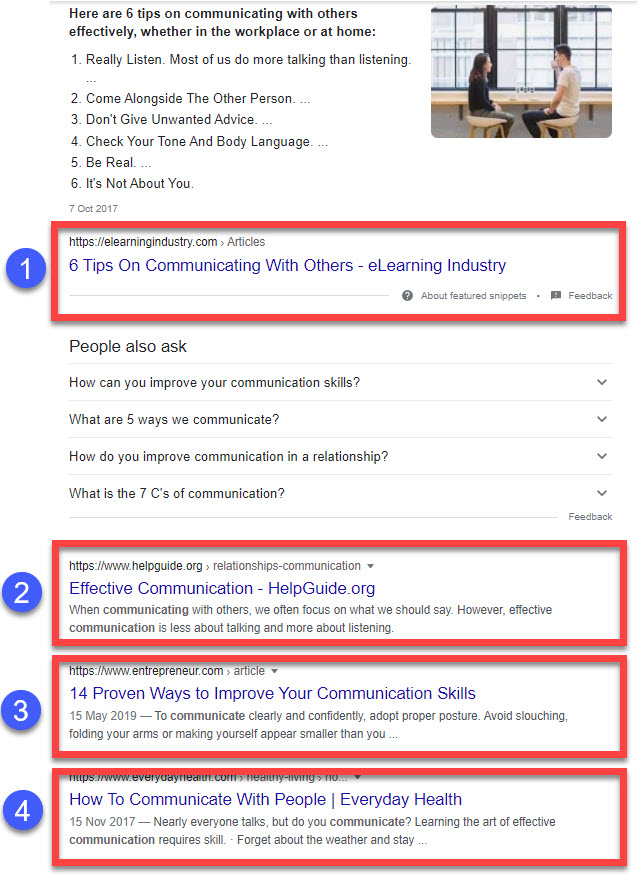
As you can see in the screenshot above, in order to rank on this SERP, you’ll have to compete with each one of these URLs.
When you do that, make sure to select ‘Exact URL’ before analyzing the URL. You can find that in the dropdown menu on the search bar.

You can now use Page Score to see how competitive each page is.

You’ll notice that the Page Score is far lower than the Domain Score. To win this SERP you are competing with the page and not the domain as a whole. That means you only have to contend with the 11 Referring Domains and 31 backlinks.
From here, the process is the same as I’ve outlined above.
In other words:
- Use the Backlinks report to see what sites are linking to the top pages
- Compile a list of the highest authority sites, focusing on high Domain Score, making sure to only pick ones that give followed links
- Look for serial linkers and start your outreach
Reclaiming Links – Lost Links Report
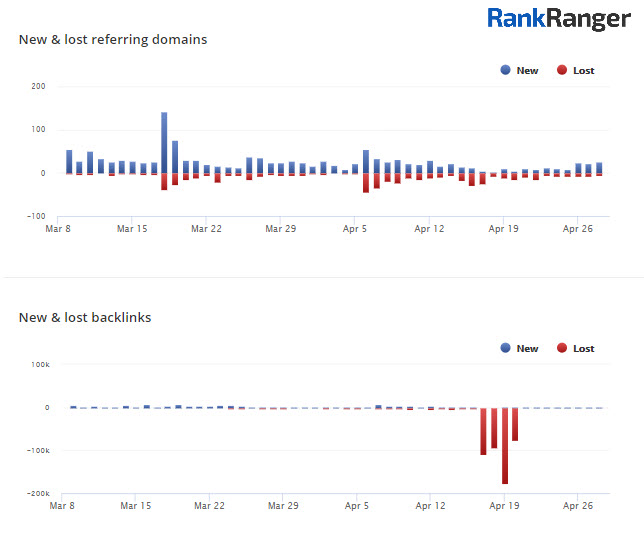
Now when running a link-building campaign, it’s important to know that links are often lost. There are a number of reasons for this.
The most common are:
- The linking page is deleted
- The linking page is updated and your link was deleted
If the page your link was on was deleted, there isn’t much you can do about that, but, if the page was updated, your link might have been deleted as an oversight.
When this happens, reach out to the website owner.
Now it’s important to treat this email as a relationship-building tool. In other words, don’t demand anything.
Instead, start the conversation. You can mention that the link was removed and ask why.
If it was an oversight, the owner will likely reinstate your link. If not, use it as an opportunity to find out what resources they are looking for. Also, treat this as an opportunity to build a relationship with the site owner.
Relationship building is never a waste of time. Use this as an opportunity to build your network.
Now although this post is about using our Backlink Explorer to create a backlink strategy, there is another tool that you should use to complement your strategy.
The Link Manager…
Backlink Tracking
Once your strategy is up and running, you’ll most likely find that you have links that are more important than others.
Some will really move the needle on improving your site’s authority. Some will not.
At this point, it’s important to keep track of your most important links. These links are some of your most important SEO assets.
Treat them like gold.
As I mentioned above, links are sometimes lost, you want to make sure these prized links point to your pages for as long as possible.
Don’t rely on the Lost Links report. Instead, you should add them to our link tracker.
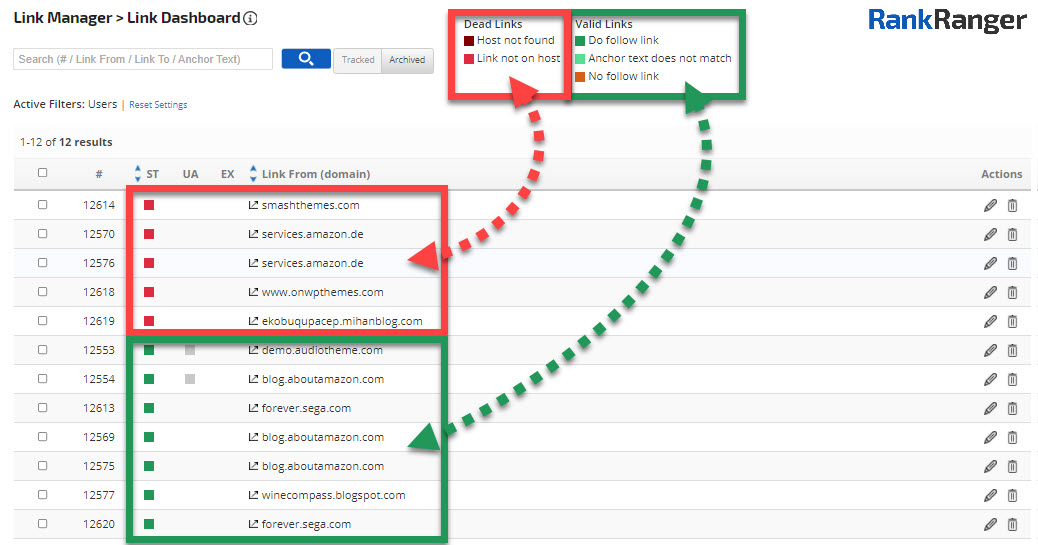
The link tracker will keep an eye on these links. It shows you if the links are healthy or if they are dead. It’ll also tell you why. You can find the Link Manager at Organic Search > Link Manager > Link Dashboard.
The Right Tools to Build Links Strategically
I hope you got value from this post.
I also hope you got to see our new Link Explorer in action. The Backlink Explorer and the Link Manager work together hand in hand.
Think of the Backlink Explorer as a research tool to help you build out your strategy. Then use the Link Manager to track your progress.
The Backlink Explorer is a part of our Site Explorer. You can find it by going to Site Explorer > Backlink Explorer > Overview.


